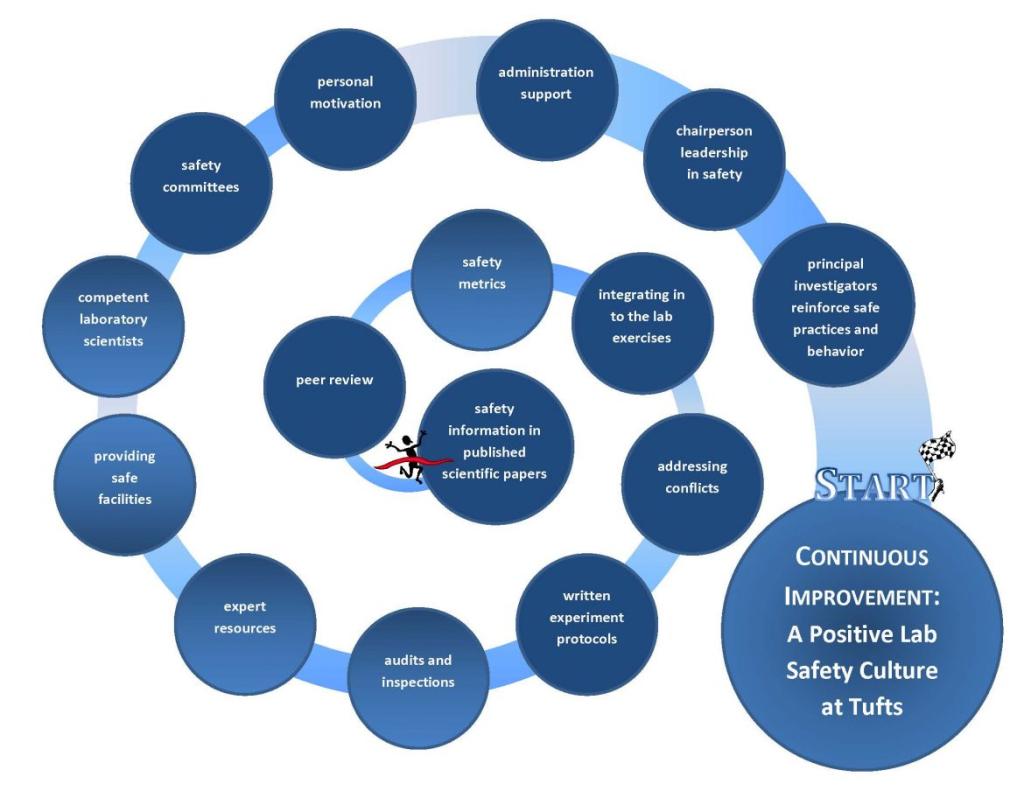
Safety – Part of the Laboratory Culture at Tufts

There are four kinds of laboratories at Tufts: research, teaching, testing and clinical. In general, laboratory work involves the use of materials, equipment and procedures that if handled or used incorrectly can cause serious harm or worse, death to lab staff and coworkers. There are at least 15 factors used to assess the safety culture of laboratories.
These include
- Principal investigator or scientist insure students and workers are trained and reinforce safe practices and behavior at all times by explanation, observation and example;
- Department chairperson provides leadership in safety in all department activities;
- Administration support through review of safety metrics, including safety goals in performance plans and reviews, and funding essential safety related costs;
- Personal motivation to plan all experiments and follow that plan at all times and include hazard review and control at each step;
- Peer principal investigator/ scientist and/or representative safety committees organized to review safety performance;
- Competent, educated and trained laboratory scientists, technicians and students; EHS lead
- Providing safe facilities that meet safety codes, regulations and guidelines and maintained in good repair; EHS and Facilities Services lead
- Adequate safety expert resources; EHS lead
- Comply with local and federal safety regulations through audits and inspections by laboratory staff, Environmental Health and Safety staff, as well as regulatory compliance inspectors with corrective actions taken in a timely manner; EHS lead
- Clear and well written experiment protocols –SOPs that explain the use of materials, equipment and procedures to follow to perform an experiment, a lab test or a laboratory exercise;
- Addressing apparent conflicts between safety and other GOALS? and cost, safety and added time to accomplish a procedure and safety and discomfort of using protective devices and wearing protective gear;
- Integrating safety hazard identification and safety practices in to the laboratory exercises in undergraduate and graduate teaching laboratories;
- Collecting, reviewing, analyzing and reporting safety metrics such as laboratory accidents, incidents, fires, chemical spills or releases. EHS lead
- Peer review and advice given and accepted constructively to identify and control hazards;
- Integrate/add safety information in dissertations and in published scientific papers.